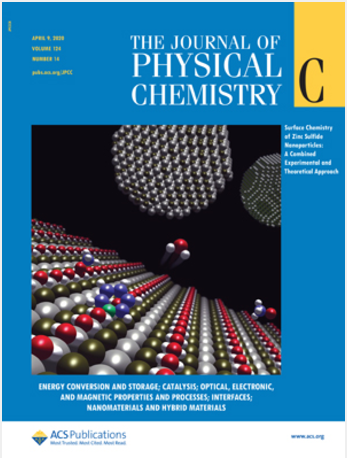Vitamin B12-Functionalized NiMn2O4 Spinel: A Promising Bioinspired Electrocatalyst for Dechlorination in the Aqueous Phase
IF 3.3
3区 化学
Q2 CHEMISTRY, PHYSICAL
引用次数: 0
Abstract
Electrochemical selective dechlorination of dichloromethane (DCM) to methane and chloromethane is a promising and sustainable strategy to remove halogenated contaminants and generate clean energy. In this work, we present an approach wherein vitamin B12 (VB12) is immobilized on the surface of NiMn2O4 hollow tubular nanofibers (NM-HTNFs) for electrocatalytic DCM reduction dechlorination in the aqueous phase system. This bioinspired catalytic system, which integrates a natural molecule, demonstrates remarkable yields of organic products. Remarkably, a total organic product yield of 127.845 mmol g–1 h–1 (methane, 49.017 mmol g–1 h–1; chloromethane, 69.740 mmol g–1 h–1; ethylene, 9.097 mmol g–1 h–1) at −1.60 V (vs Ag/AgCl) was achieved, and an impressive methane Faradaic efficiency up to 26.78% was achieved. Experimental findings were supported by in situ adsorption FTIR spectroscopy that shed light on a synergistic effect of NM-HTNFs and VB12, facilitating the adsorption ability of DCM and the charge transfer rate, further enhancing the carbon–chlorine (C–Cl) bond scission. It dramatically improved the reductive performance of DCM dechlorination. This work is expected to provide a bioinspired way where naturally abundant VB12 has been taken full advantage of for the efficient transformation of DCM to high-value-added products.

维生素b12功能化NiMn2O4尖晶石:一种有前途的生物电催化剂用于水相脱氯
电化学选择性脱氯将二氯甲烷(DCM)转化为甲烷和氯甲烷是去除卤化污染物和产生清洁能源的一种有前途的可持续策略。在这项工作中,我们提出了一种将维生素B12 (VB12)固定在NiMn2O4空心管纳米纤维(NM-HTNFs)表面的方法,用于电催化DCM在水相体系中还原脱氯。这种生物启发的催化系统,集成了一个天然分子,显示出显著的有机产品产量。总有机产物产量为127.845 mmol g-1 h-1(甲烷为49.017 mmol g-1 h-1;氯甲烷,69.740 mmol g-1 h-1;在−1.60 V (vs Ag/AgCl)下,达到了9.097 mmol g-1 h-1),甲烷法拉第效率达到了26.78%。原位吸附FTIR支持了实验结果,揭示了纳米htnfs和VB12的协同作用,促进了DCM的吸附能力和电荷转移速率,进一步促进了碳-氯(C-Cl)键的断裂。显著提高了DCM脱氯的还原性能。这项工作有望提供一种生物启发的方式,充分利用天然丰富的VB12,将DCM高效转化为高附加值产品。
本文章由计算机程序翻译,如有差异,请以英文原文为准。
求助全文
约1分钟内获得全文
求助全文
来源期刊

The Journal of Physical Chemistry C
化学-材料科学:综合
CiteScore
6.50
自引率
8.10%
发文量
2047
审稿时长
1.8 months
期刊介绍:
The Journal of Physical Chemistry A/B/C is devoted to reporting new and original experimental and theoretical basic research of interest to physical chemists, biophysical chemists, and chemical physicists.
 求助内容:
求助内容: 应助结果提醒方式:
应助结果提醒方式:


